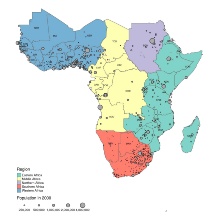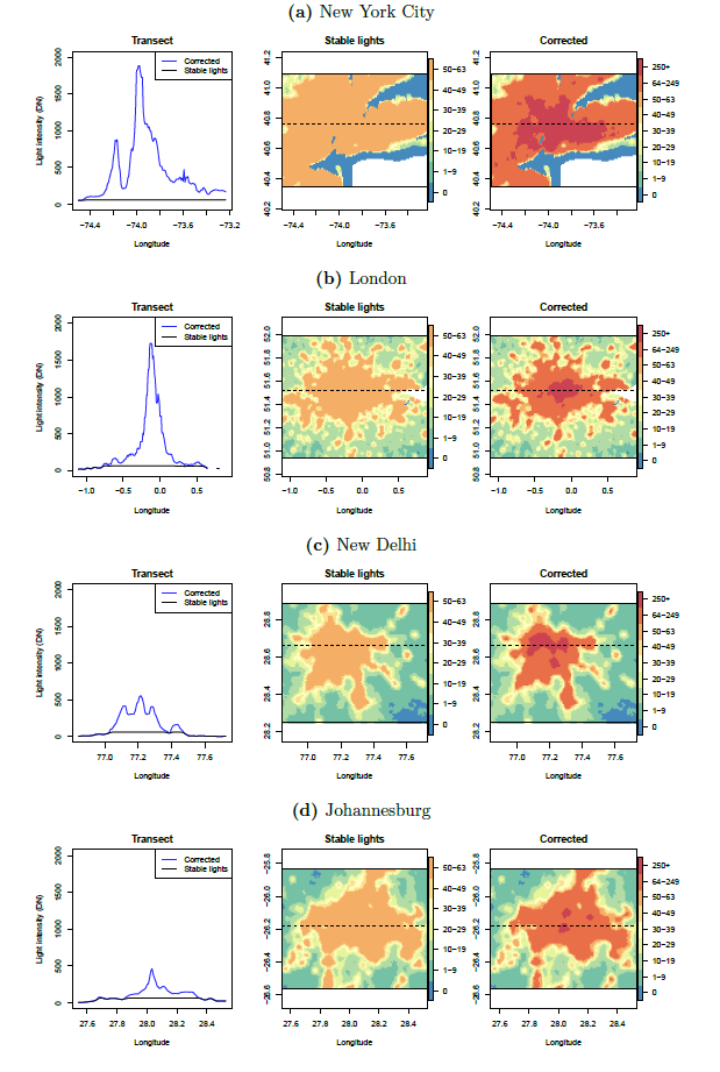Abstract
Tracking the development of cities in emerging economies is difficult with
conventional data. This paper shows that nighttime lights can be used as a reliable
proxy for economic activity at the city level, provided they are first corrected for
top-coding. The commonly-used satellite images of nighttime light intensity fail to
capture the true brightness of larger cities. We present a stylized model of urban
luminosity and empirical evidence which both suggest that these ‘top lights’ can
be characterized by a Pareto distribution or similarly heavy-tailed distributions.
We then propose a correction procedure that recovers the full distribution of city
lights. Our results show that the brightest cities account for nearly a third of global
light output. Applying this approach to cities in Sub-Saharan Africa, we find that
primate cities are outgrowing secondary cities. Contrary to the top-coded data, our
data show that differences at the intensive margin drive the differential in relative
growth rates across city types.



